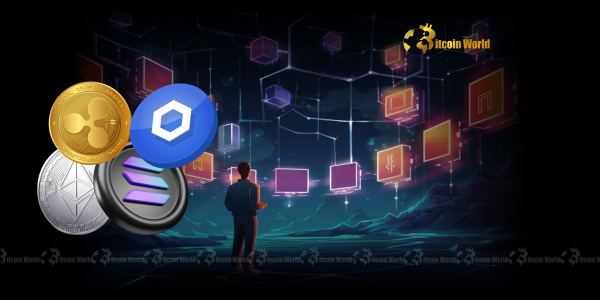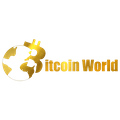Unlocking Billions: How Ethereum, Solana, XRP, and Chainlink are Revolutionizing the Tokenization Trend
0
0

Are you ready for the next seismic shift in finance? The world of digital assets is on the cusp of a monumental transformation, as the tokenization trend moves from a theoretical concept to a tangible reality. Imagine a future where every asset, from real estate to fine art, from company shares to commodities, can be digitally represented and traded on a blockchain. This isn’t just a distant dream; it’s happening now, and leading crypto investment firm Bitwise has highlighted several key players poised to lead this charge.
The Unstoppable March of the Tokenization Trend
Bitwise, a respected voice in the crypto investment space, recently underscored the immense potential of asset tokenization. Their report, as noted by The Block, signals a crucial turning point: tokenization is no longer just a buzzword but a burgeoning industry. We’re witnessing significant milestones, such as major exchanges like Robinhood and Kraken venturing into tokenized stock products. Even established players like XRP are planning to tokenize a staggering $200 million in assets. This shift is set to unlock trillions of dollars in real-world assets (RWAs), moving them onto the transparent, efficient, and globally accessible rails of blockchain technology. But which blockchains are best positioned to capture this monumental value?
The beauty of tokenization lies in its ability to:
- Enhance Liquidity: Transform illiquid assets into easily tradable digital tokens.
- Enable Fractional Ownership: Allow multiple investors to own a piece of high-value assets like real estate or expensive art.
- Boost Transparency: Record ownership and transaction history on an immutable ledger.
- Improve Efficiency: Streamline processes, reduce intermediaries, and lower transaction costs.
- Increase Accessibility: Open up investment opportunities to a global audience, democratizing finance.
Why is Ethereum Tokenization So Pivotal?
When we talk about the foundation of decentralized finance (DeFi) and the broader tokenization movement, Ethereum tokenization invariably comes to mind. Ethereum is the undisputed king of smart contract platforms, serving as the backbone for thousands of decentralized applications (dApps) and the vast majority of existing tokens. Its ERC-20 standard has become the de facto benchmark for fungible tokens, while ERC-721 and ERC-1155 standards power the thriving Non-Fungible Token (NFT) market. This established infrastructure and developer community make Ethereum a natural home for tokenized assets.
While Ethereum has faced challenges with scalability and high gas fees, the ongoing transition to Ethereum 2.0 (now known as the Merge and subsequent upgrades like Surge, Verge, Purge, and Splurge) promises to significantly enhance its throughput and reduce costs. Furthermore, the burgeoning ecosystem of Layer-2 scaling solutions, such as Optimism, Arbitrum, and zkSync, are already providing efficient environments for large-scale tokenization projects. Bitwise’s confidence in Ethereum stems from its robust security, network effects, and the sheer volume of capital and innovation already built on its rails. For institutions looking to tokenize significant assets, Ethereum’s battle-tested security and extensive network are compelling factors.
Can Solana Tokenization Keep Up the Pace?
Enter Solana, a blockchain often lauded for its blistering speed and remarkably low transaction costs. While Ethereum offers unparalleled decentralization and security, Solana tokenization presents a compelling alternative for applications requiring high throughput and near-instant finality. Its innovative Proof-of-History (PoH) consensus mechanism, combined with Proof-of-Stake (PoS), allows Solana to process tens of thousands of transactions per second, making it an attractive platform for high-frequency trading of tokenized assets and large-scale consumer-facing applications.
Bitwise’s inclusion of Solana highlights its potential to handle the immense transaction volume that tokenization of trillions of dollars in assets would entail. Projects built on Solana, from DeFi protocols to NFT marketplaces, are already demonstrating its capacity for rapid growth and user adoption. For tokenization initiatives that prioritize speed and cost-efficiency, particularly those involving micro-transactions or large volumes of tokenized securities, Solana offers a powerful and scalable infrastructure. Its growing developer ecosystem and increasing institutional interest further solidify its position as a strong contender in the RWA tokenization race.
XRP Tokenization: Bridging Traditional Finance and Blockchain
XRP and the XRP Ledger (XRPL) have long been associated with cross-border payments and institutional use cases. Ripple, the company behind XRP, has made significant strides in forging partnerships with financial institutions globally. Bitwise’s specific mention of XRP tokenization, particularly the plans to tokenize $200 million in assets, underscores a strategic pivot or expansion for the network beyond just payments. The XRPL’s design, which emphasizes speed, low cost, and energy efficiency, makes it well-suited for high-volume financial transactions, including the issuance and transfer of tokenized securities.
Ripple’s existing relationships with banks and financial service providers could provide a significant advantage in onboarding traditional assets onto the blockchain. The XRPL’s built-in decentralized exchange (DEX) functionality also offers a native environment for trading tokenized assets without relying on external platforms. As traditional finance increasingly explores blockchain for efficiency and innovation, XRP’s enterprise-focused approach and proven track record in facilitating value transfer position it as a strong candidate for enabling large-scale asset tokenization, especially for regulated financial products and institutional use cases.
Chainlink Real-World Assets: The Essential Bridge
While Ethereum, Solana, and XRP provide the foundational layers for tokenizing assets, Chainlink real-world assets (RWAs) are the critical bridge connecting these on-chain representations to their off-chain counterparts. Chainlink is the industry-leading decentralized oracle network, providing reliable and tamper-proof data feeds to smart contracts. For tokenization to truly flourish, smart contracts need accurate, real-time information about the value, status, and ownership of the underlying physical assets. This is where Chainlink becomes indispensable.
Consider a tokenized real estate property. For its smart contract to accurately reflect its value or to execute a transaction based on certain conditions, it needs reliable price feeds, property registry data, or even environmental sensor data. Chainlink’s network of decentralized oracles can securely fetch this information from the real world and deliver it to the blockchain, enabling smart contracts to function with real-world context. This ensures that tokenized assets remain synchronized with their physical counterparts, maintaining trust and integrity. Without robust oracle solutions like Chainlink, the promise of RWA tokenization would remain largely unfulfilled, as the crucial link between the digital and physical worlds would be missing. Chainlink’s recent Chainlink Economics 2.0 and Cross-Chain Interoperability Protocol (CCIP) further solidify its role as a foundational layer for secure and scalable RWA adoption.
Navigating the Future: Challenges and Opportunities
While the potential of the tokenization trend is immense, it’s not without its hurdles. Regulatory clarity remains a significant challenge across different jurisdictions. Governments and financial bodies are still grappling with how to classify and regulate tokenized securities, real estate, and other assets. Interoperability between different blockchains is another key area for development, ensuring that tokenized assets can seamlessly move and be recognized across various networks. Security, particularly the safeguarding of private keys and protection against smart contract vulnerabilities, also remains paramount.
However, the opportunities far outweigh these challenges. We are entering an era where financial services will be reimagined, becoming more accessible, efficient, and global. Imagine fractional ownership of iconic landmarks, instant settlement of complex derivatives, or automated supply chains powered by tokenized commodities. The implications for liquidity, capital formation, and wealth distribution are profound. Businesses and investors who understand and embrace this shift will be best positioned to capitalize on the coming wave of innovation.
Actionable Insights for the Tokenized Future
For those looking to engage with the tokenization revolution, here are some actionable insights:
- Educate Yourself: Understand the underlying technology, the legal frameworks, and the specific use cases of tokenized assets.
- Identify Key Players: Beyond the blockchains mentioned, research companies and protocols actively building in the RWA tokenization space.
- Assess Risk: Like any emerging market, tokenization carries risks. Due diligence on projects and regulatory compliance is crucial.
- Consider Diversification: If investing, consider a diversified approach that includes exposure to foundational layer-1s, oracle networks, and specific RWA platforms.
- Stay Updated on Regulations: The regulatory landscape is evolving rapidly. Keep abreast of developments in your jurisdiction.
The Dawn of a New Financial Era
The insights from Bitwise are a powerful affirmation: the tokenization of real-world assets is not just a theoretical possibility but an imminent reality that will redefine finance. Ethereum, with its robust ecosystem; Solana, with its unparalleled speed; XRP, with its institutional focus; and Chainlink, as the essential bridge for real-world assets, are all poised to play pivotal roles in this transformative journey. As trillions of dollars begin their migration onto the blockchain, these networks are not just beneficiaries of the tokenization trend; they are its very architects. The future of finance is decentralized, fractionalized, and tokenized, and the time to understand its immense potential is now.
To learn more about the latest crypto market trends and the evolving landscape of tokenization trend, explore our article on key developments shaping the future of Chainlink real-world assets and institutional adoption.
0
0
 Manage all your crypto, NFT and DeFi from one place
Manage all your crypto, NFT and DeFi from one placeSecurely connect the portfolio you’re using to start.





